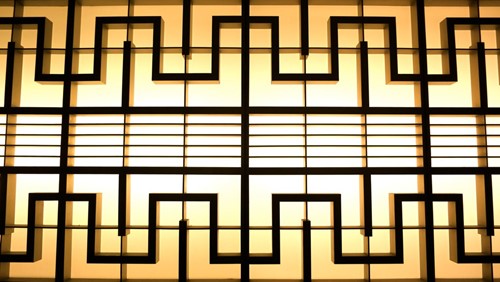
Mid-century modern and art deco are popular design styles that are sometimes mistaken for the same thing. While the two styles share some similarities, there are some key differences both in concept and execution. Both styles feature differing materials, colors and patterns in both architecture and furniture.
Some might call art deco a “dressed up” version of mid-century modern. Art deco is glamorous, sophisticated and bold where mid-century modern is more streamlined, minimalist and purely functional. Art deco follows a lot of the same basic concepts like geometric shapes and high contrast but embellished with intricate motif inspired by technology rather than the natural world. Where mid-century modern is approachable and welcoming, art deco emulates an ideal sophistication and advancement.
All of that said, there are some more specific ways to spot the differences between the two styles. Here are the three key design elements to compare:
Materials
New and unexpected materials were a key aspect of the mid-century modern style when it began. Plastic, laminates and plexiglass were some examples of materials commonly used to create smooth, sleek shapes. Stucco and glass remain staples of exterior mid-century modern design. A lot of surfaces lack special finishing, making them look and feel clean and practical. Mid-century modern design uses materials that are practical and accessible to all.
As for art deco, the materials create a sense of exclusivity and glamour. Polished stone, stainless steel, gold and chrome are all common in furniture and art. Mirror finishes on metallic surfaces and glossy lacquers on wood add a characteristic flashiness. Exteriors use polished natural stone and concrete often paired with metallic ornamentation. Art deco may not always be expensive, but it often looks expensive because of the richness of the finishes and materials. Art deco uses the latest and greatest and perfectly pristine materials to create a sense of luxury and sophistication.
Colors and Patterns
Mid-century modern includes a wide variety of colors and patterns, but the brightest and boldest are typically reserved for accent pieces. Interiors feature more neutral color palettes with exciting pops of color or bold pattern. Art deco uses bold and dramatic colors like red, yellow and blue with metallic shades. A heavy use of black, especially paired with metallic gold or steel, is far more common to see in art deco than in mid-century modern.
In terms of patterns, both styles share a love for organic-inspired shapes and motif. While mid-century modern uses strong lines and angles in shaping furniture and architecture, art deco uses them everywhere. There is a wide variety of geometric shapes and other more abstract imagery like chevrons and sunbursts. Line repetition is also a staple of art deco both in furniture and other embellishments. Overall, you might find that mid-century modern makes use of fewer but bigger shapes while art deco focuses more on repetition of tiny shapes.
Like so many other design styles, both art deco and mid-century modern draw their inspiration from a specific era and place in human history. This also means both contain elements of other design styles and art movements from the past and present. In addition to all the above, you can often differentiate the two by considering the different ways in which each style combines multiple contrasting sources of inspiration.
About the Author


